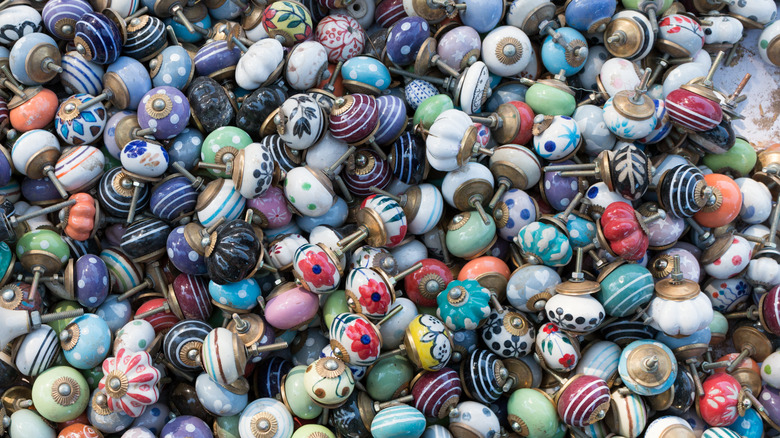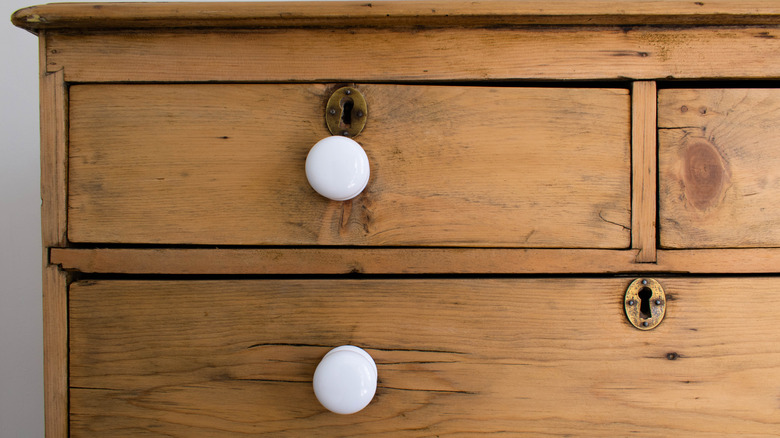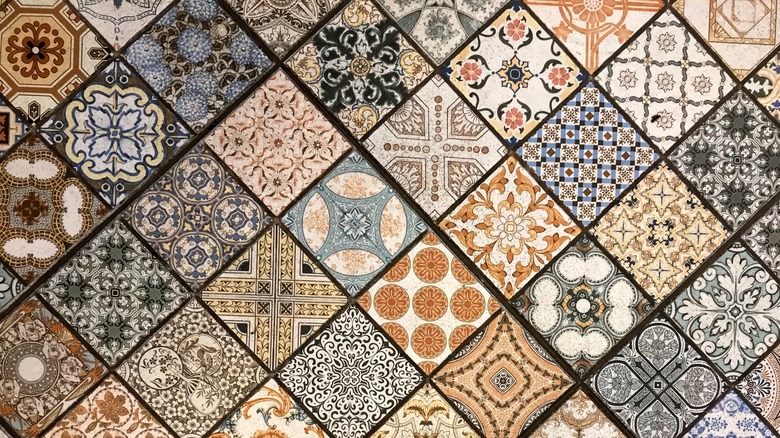The Best Way To Clean Ceramic Hardware
If you're on a tight budget, an easy way to change up the look of cabinets or furniture is by getting new hardware. New knobs and handles can completely change the look of your cabinetry or drawers and add a fun touch to your space. If you want to create a vintage look, you could consider ceramic hardware. West Magnolia Charm says ceramic hardware can add a whimsical element to any space. Ceramic hardware usually features bold colors and designs. And to make your room even more unique, you could mix and match patterns and color schemes. Adding ceramic tiles to your floor or backsplash will tie it together for a fun, bohemian look.
If you choose to add ceramic elements to your space, you'll need to know how to clean them. There are a few ways to clean ceramic hardware and tiles — and some things to avoid to keep it looking great for years.
Cleaning ceramic hardware
Cleaning ceramic hardware is pretty simple. In fact, Liv Space recommends simply using a damp cloth to remove dust. However, knobs and handles are used every day. This means that grime, grease, germs, and bacteria can quickly build up on your hardware, making your space look old and dirty. This is why occasionally doing a deep cleaning and disinfecting job on your hardware is essential.
When cleaning ceramic hardware, the most important thing to remember is not to use harsh chemicals or acids on the surfaces. These materials can damage the glazed surface of your hardware, per Specialty Kitchens. Instead, Kitchen Infinity recommends cleaning with baking soda and warm water for a more gentle result. To clean the holes in your hardware, use a toothpick soaked in baking soda. To preserve your ceramic handles, you can also brush vegetable oil over their surface. Vegetable oil will help prevent discoloration of your ceramics over time.
Cleaning ceramic tiles
You may also want to clean your ceramic tile floors or backsplash. Like with your ceramic hardware, you shouldn't use harsh chemicals on your other ceramic surfaces. You'll also want to avoid using ammonia on ceramic tiles, as it can discolor the grout, per Specialty Kitchens. You'll want to clean with a neutral cleaner — but be sure not to use too much, as you could quickly develop a layer of film on your floors or backsplash. After cleaning, be sure to rinse with water and dry.
Pro House Keepers also recommends regularly sweeping to remove dirt and particles that could scratch the ceramic surface. To deep clean your ceramic floor, you can use a steam mop. This will clean both the tiles and the grout. Pro House Keepers also recommends applying a mixture of 1/2 cup of baking soda, 1/4 cup of hydrogen peroxide, and 1 tablespoon of dish soap to the grout. After letting this paste sit in the grout for five to 10 minutes, scrub with a toothbrush, then wipe with a wet microfiber cloth.


